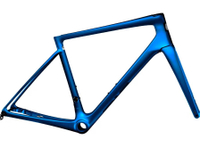You had me at fender mounts: The Enve Melee reviewed
Making its WorldTour debut this season, the Enve Melee is so much more than just a race bike
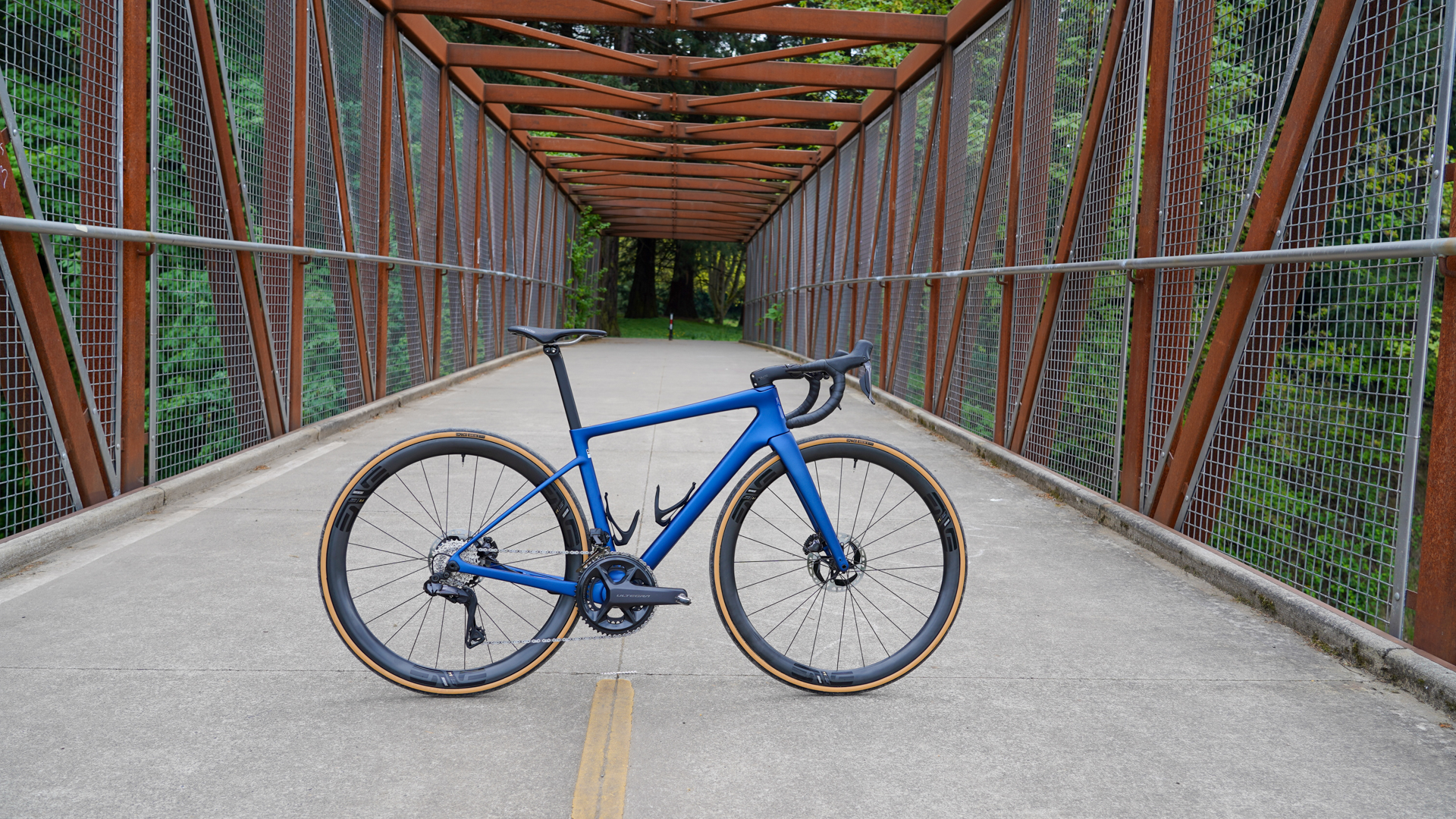
Aerodynamic and light, equipped with fender mounts and wide tire clearance, the Melee is a race bike that blurs the lines in the best of ways. From Paris-Roubaix style cobbles to long arduous days of the Tour de France, the Melee is a capable companion for those that demand the most of their equipment. For enthusiasts, the bike’s well-roundedness and thoughtful design considerations adds comfort and conveniences uncommonly found in race bikes
-
+
Room for 35mm tyres
-
+
Integrated mudguard mounts
-
+
Threaded bottom bracket
-
+
Minimal branding & clean aesthetics
-
+
Choice of stem, bar and seatpost at purchase
-
-
Limited color options
-
-
I sold as a frameset or chassis rather than a full bike
-
-
An integrated front end isn’t for everyone
You can trust Cycling Weekly.
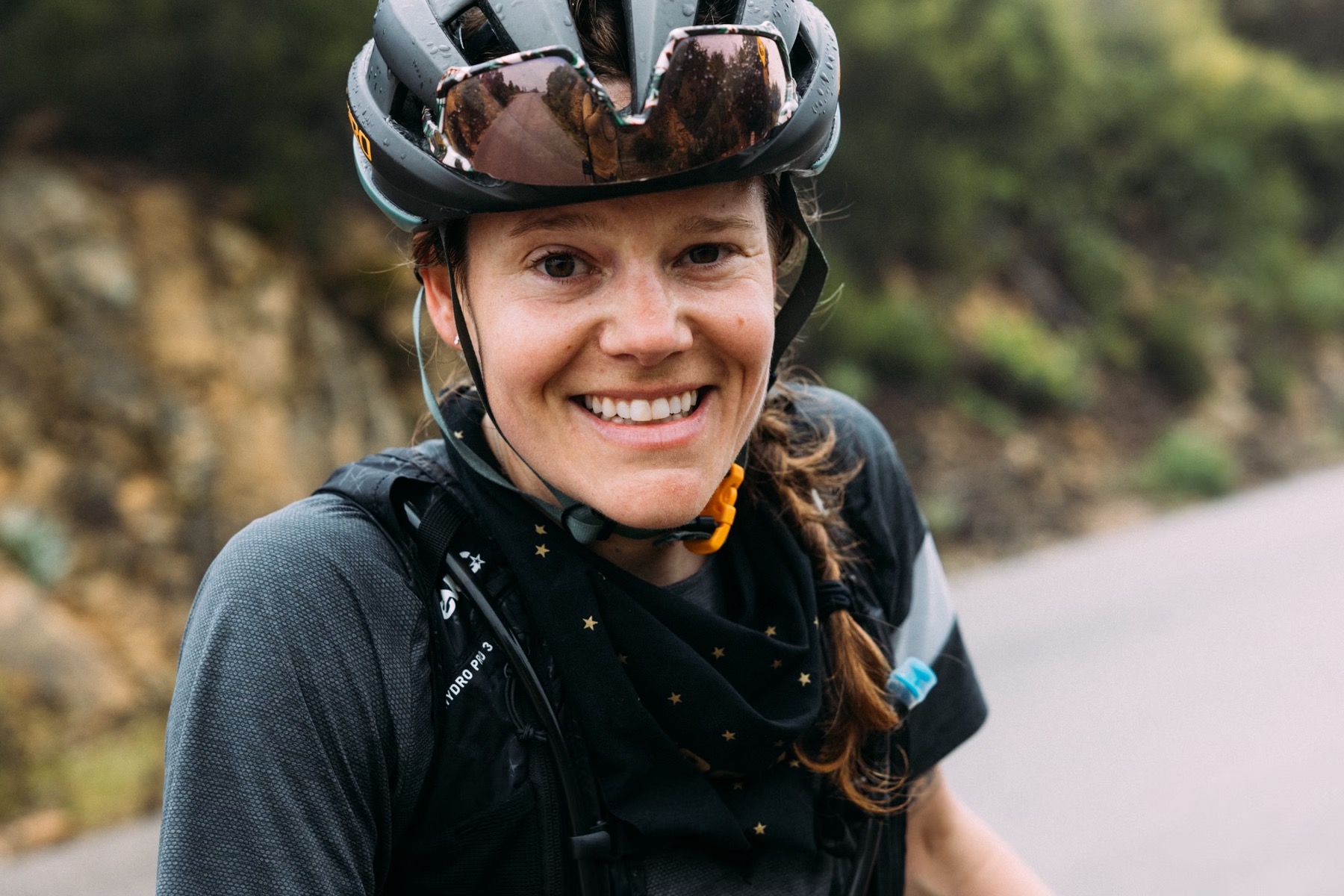
Sonny Evans
U.S. carbon component manufacturer Enve has been very busy in the past few years. Renowned for its carbon wheels, forks and components, the Utah-based company entered the frame manufacturing market in 2021 with its U.S.-made Custom Road bike. It has produced a new frameset every year since, and the brand now offers a full line-up of drop bar bikes ranging from a big-tired gravel bike to racing bikes and the newly unveiled Fray all-road model. With four bike models introduced in just as many years, the company is evolving from aftermarket wheel and component specialists to a full-service bicycle brand.
In professional racing, too, Enve has been growing its presence. Tadej Pogačar and his UAE Team Emirates have been riding Enve's SES line of wheels and aero cockpits –the latter specifically designed to meet the team's demands– to many race wins. Similarly, Ivan Basso and Alberto Contador's project, Team Polti Kometa, also continues to make use of Enve wheels and components. But when TotalEnergies lost Specialized as its equipment sponsor at the end of 2023, Enve stepped up to fill the void and supply the necessary bikes – a massive undertaking for a small brand that made its first bike frame only four short years ago.
The WorldTour team uses the Enve Melee chassis, paired with the brand's finishing kit and its full collection of U.S.-made SES wheels. Having ridden and reviewed every other stock model in the Enve line-up, we decided it was high time for one of us here at Cycling Weekly to swing a leg over the Melee as well.
The Melee at first glance
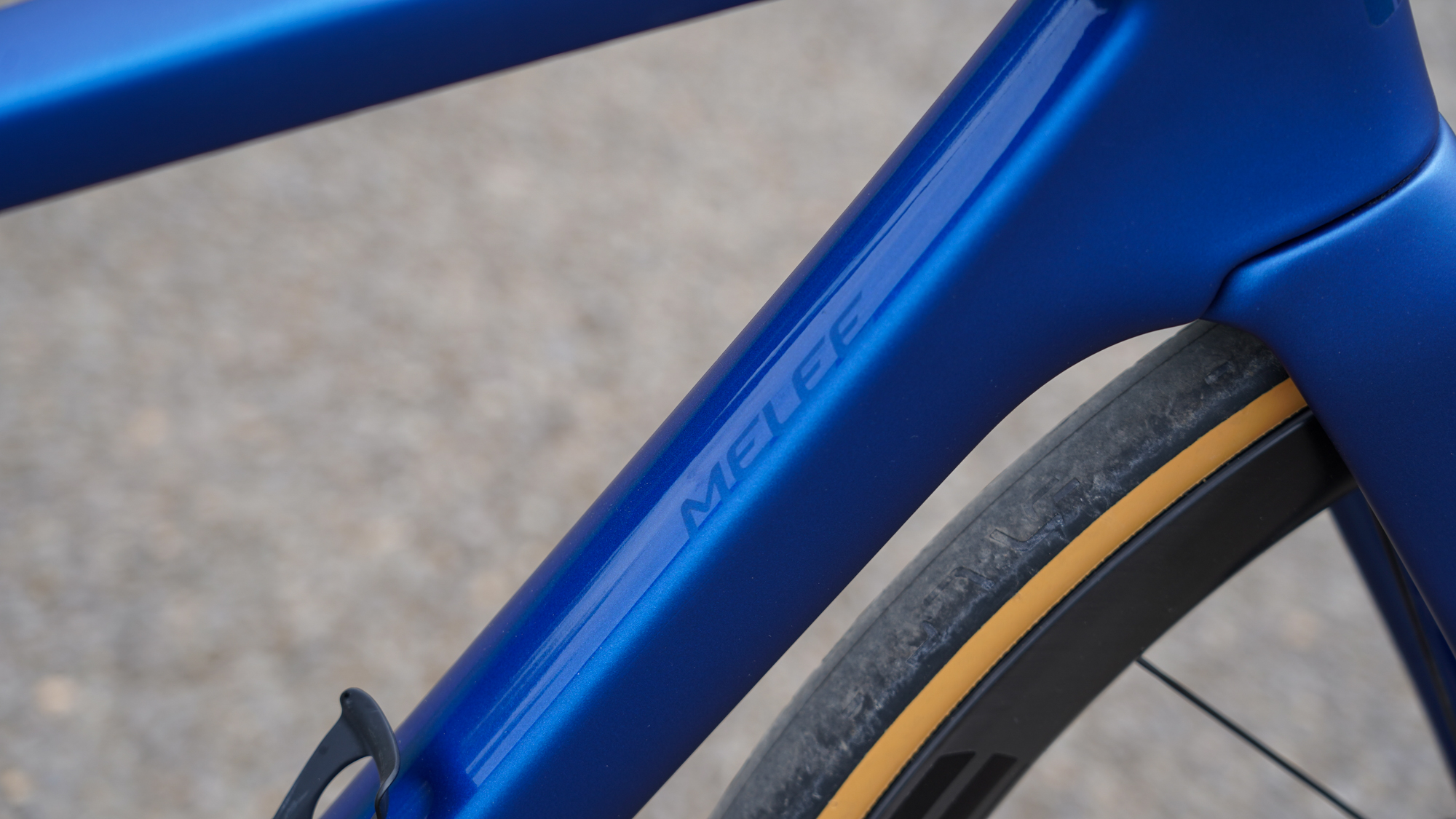
What's interesting about Enve's line-up of bikes is that each model smudges the lines of its designated box. With its lightweight carbon monocoque frame and sleek, aerodynamic profile, Enve describes the Melee as "a no-holds-barred modern race bike built specifically to meet the performance demands of the discipline." Yet pro gravel racer Alexey Vermeulen proved that the Melee is also perfectly capable of being raced on gravel when he won the 2023 Belgian Waffle Ride California aboard the Melee specced with 35mm tires that fit with ease. What's more, the frame sports integrated fender mounts.
Still, Enve says the Melee's geometry and handling were "optimized" for 27-32mm tires, and aerodynamics were a significant design consideration, evident in the Kamm-tailed tube shapes and the fully integrated front end.
So, let's have a closer look at this not-so-purebred racer.
Test bike Specs:
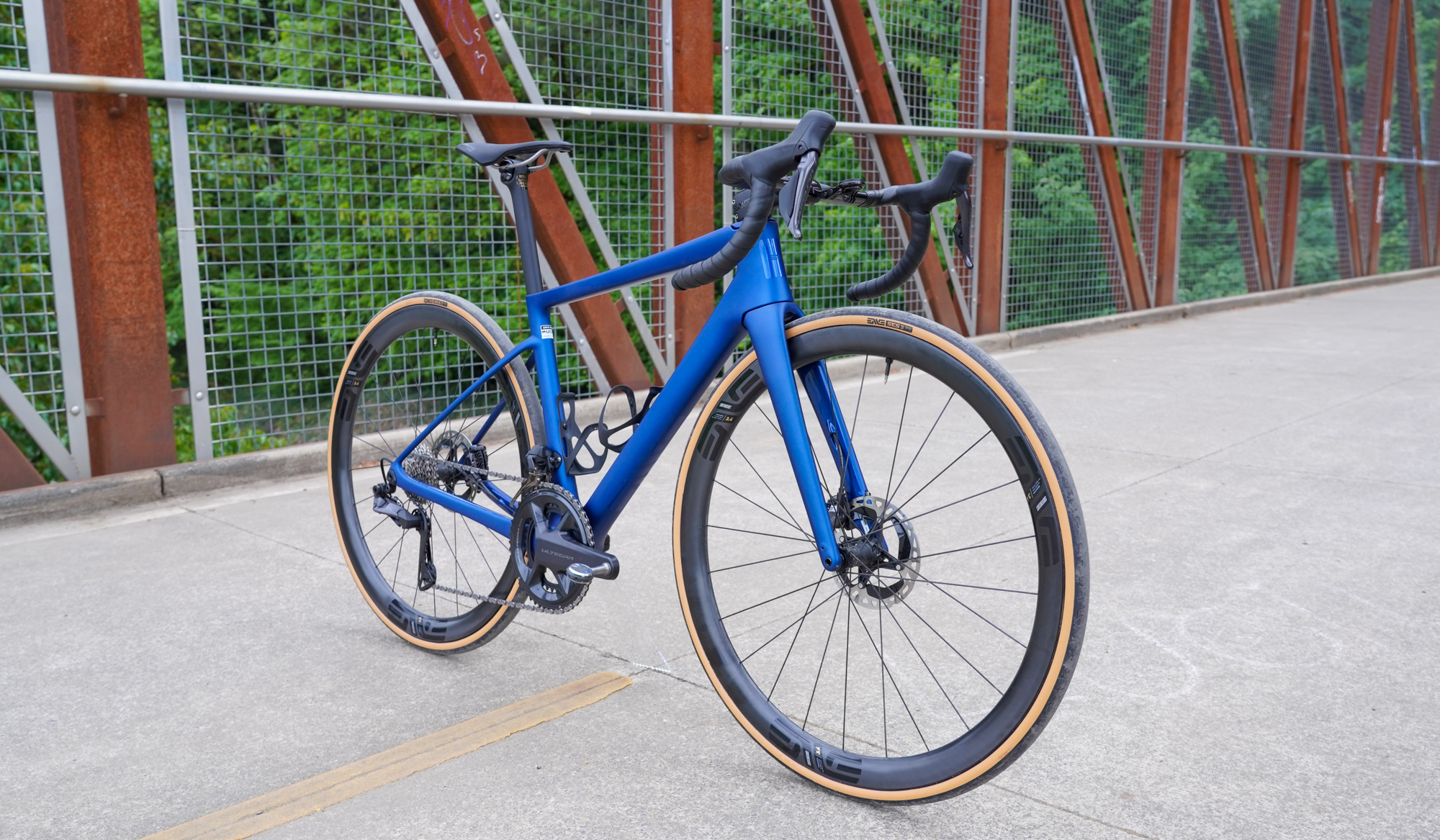
- Chassis: Enve Melee frameset in aegean blue with 12 x 100mm front thru axle and 12 x 145mm rear thru axle, Enve aero seatpost with zero setback, 90mm SES In-Route aero road stem and 40cm SES aero In-Route handlebar
- Groupset: Shimano Ultegra Di2
- Wheels: SES 3.4 wheels (39mm rim depth in the front, 43mm on the rear)
- Tires: Enve SES tires in 29mm
- Saddle: ENVE X Selle Italia SLR Boost saddle.
- Weight: 7.2kg fully built
Bike Design
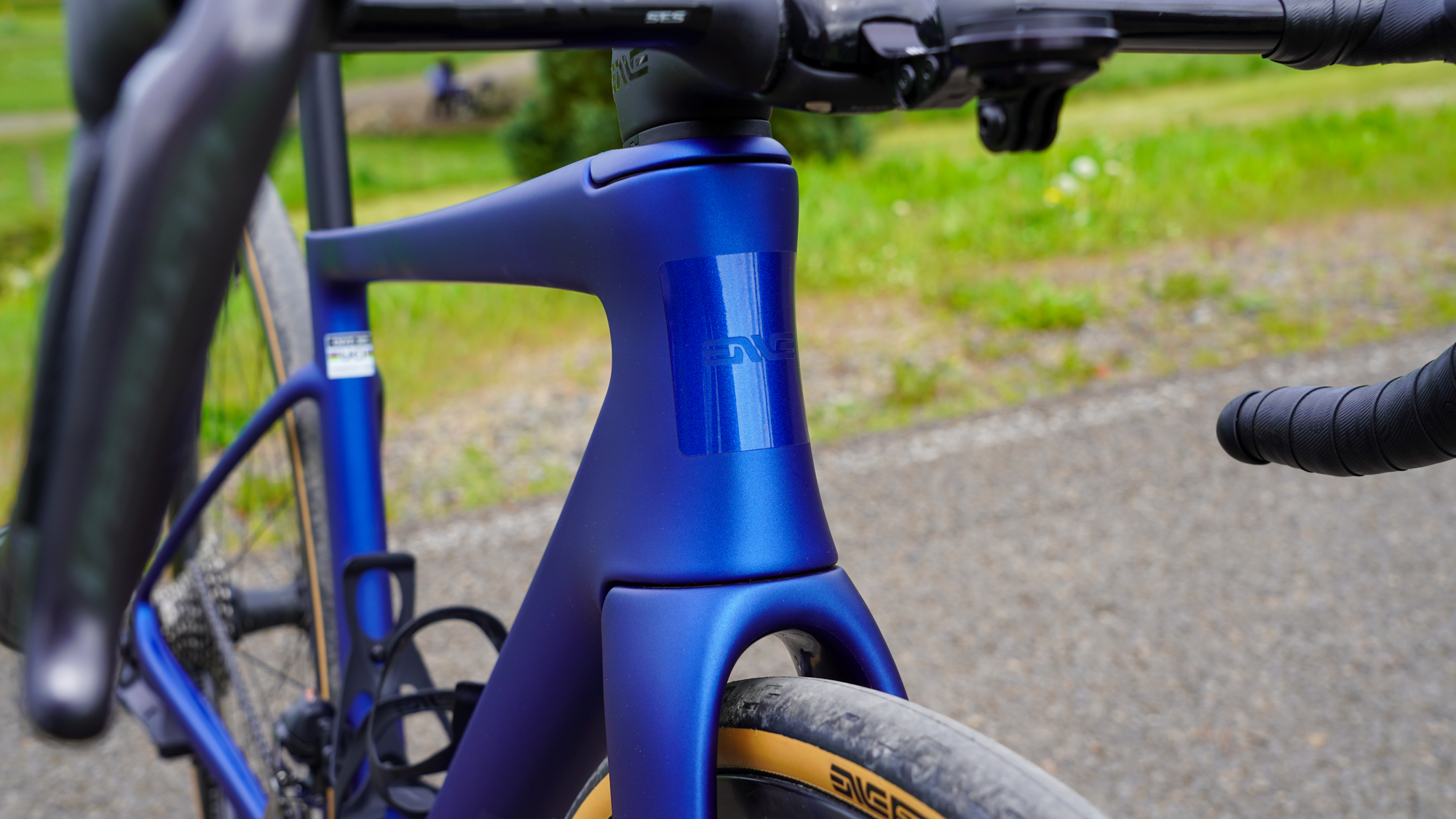
Unlike the Custom Road bike, the Melee comes in seven stock sizes and is produced 'overseas' instead of at Enve's Utah factory. The Melee frameset is made using various laminates built from unidirectional carbon fibers following ENVE's own Material Optimised Design (M.O.D.) process. In this process, the materials, fiber angles, and weights are selected and/or manipulated to achieve zone-specific performance and characteristics for each part.
"Carbon is the key ingredient, and we use the best we can get our hands on," says Jake Pantone, Enve's VP of Product and Brand. "But ultimately, the process it is subjected to makes it an Enve product."
The shape of the Melee was developed using wind tunnel testing and Computational Fluid Dynamics (CFD). The latter is a method that involves simulating airflow around a bike and its rider, analyzing factors like drag and pressure distribution. CFD helps optimize aerodynamic performance and informs such design elements as the Melee's Kamm-tail-shaped tubing, seatpost, and fully integrated, cable-free front end. Additionally, the tube shapes were tuned to complement Enve's own SES-line of wheels and cockpits to deliver a full aerodynamic package. The claimed weight of the frame is 850 grams for a painted 56cm frame without hardware.
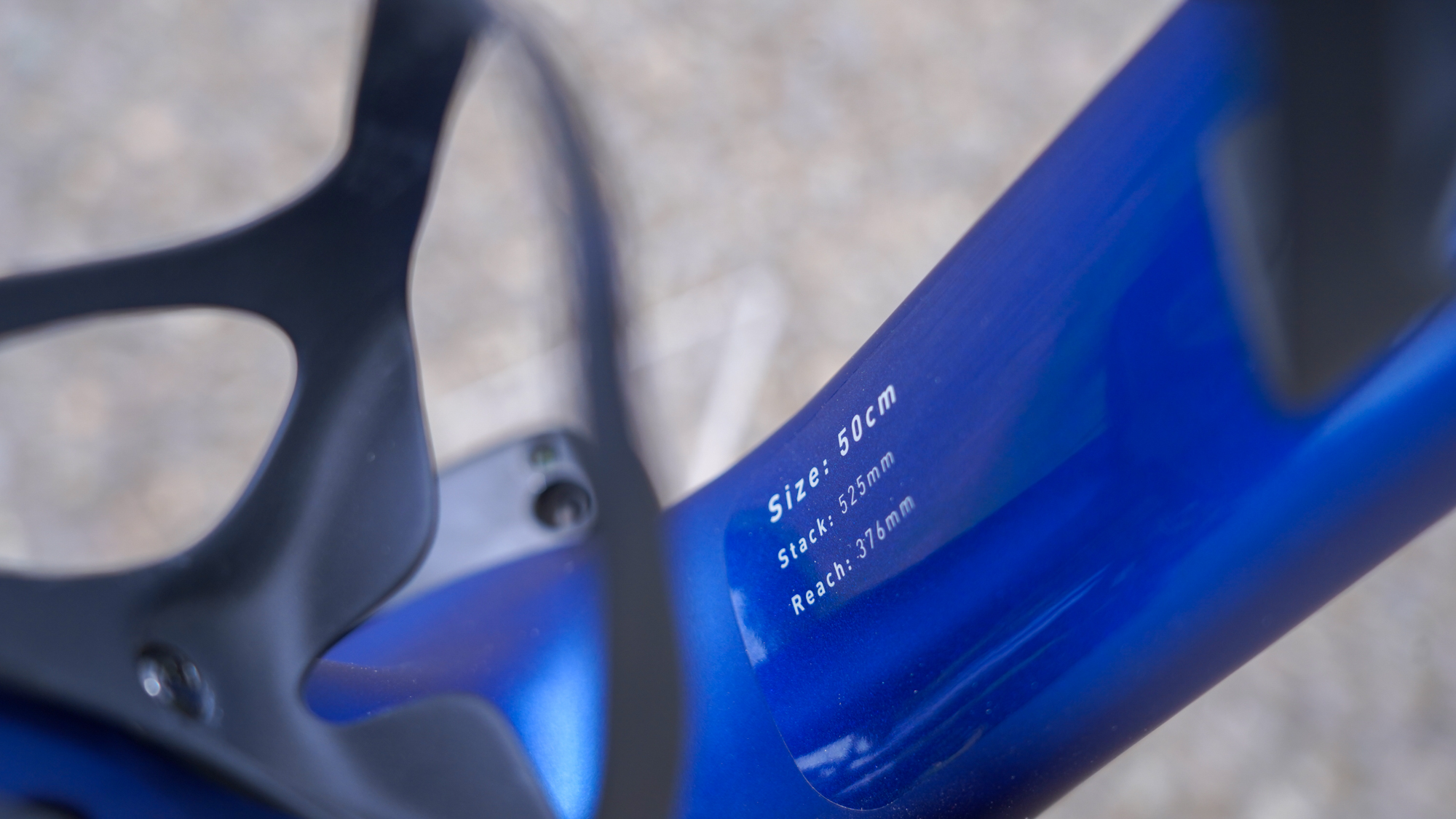
The geometry is in line with its WorldTour race bike competitors, with perhaps only the slightest increase in stack height and a slightly longer top tube than some.
Due to having produced carbon forks for bike builders for the past 17 years, Enve understands how much a fork, and specifically the fork rake, can impact a bike's handling. Enve, therefore, offers five unique fork rakes across its seven stock geometries, which is more than most companies. This extra effort was made to ensure that the Melee will deliver the same handling required of a race bike for even the shortest rider (aboard a 47cm frame) and tallest rider (aboard a 60cm frame).
Enve’s other stock bike models:
The Fray: released in April of this year, the Fray is Enve’s vision of 'the definitive all-road machine' – designed for those "who came from road racing and are now looking for broader two-wheeled objectives but performance is still critical." The Fray aims to meet the demands of the modern road rider by pairing a road racing pedigree with all-road features like wider tyre clearance, in-frame storage and a fit comfortable for all-day adventures in the saddle.
The MOG: Enve’s first official foray into the gravel bike market pairs lightweight carbon construction, aerodynamic tube shapes and 700c-only wheels with beefy 50mm tyre clearance, a slacker geometry and fork mounts, making it both a gravel racer and bikepacking companion.
Enve also offers an in-depth online fit calculator to help Melee customers find the right size. In addition to identifying the correct frame size, the calculator will also suggest stem length, bar width and seatpost setback. This information is necessary because Enve sells its bikes as a "chassis" rather than a full build.
The chassis includes the Melee frame, fork, headset and the rider's choice of Enve stem, handlebar and seatpost, and retails for $5,500 / £5,300. We've also seen a few select online retailers selling the Melee as a frameset rather than a chassis, meaning you get the frame and fork and nothing else for $4,450.
Those interested in a fully built Melee can work directly with an Enve retailer to select and assemble the specs. As of this spring, Enve now offers the Melee in three colorways: Damascus grey, Aegean blue and Enve black.
One final design note is that Enve opted for a threaded T47 bottom bracket rather than a press-fit option. The benefits here are that threaded designs tend to be more resistant to creaking and require less maintenance over time.T47 bottom brackets also have a larger diameter than traditional threaded bottom brackets, allowing for compatibility with larger spindle diameters for increased stiffness and power transfer.
The Ride
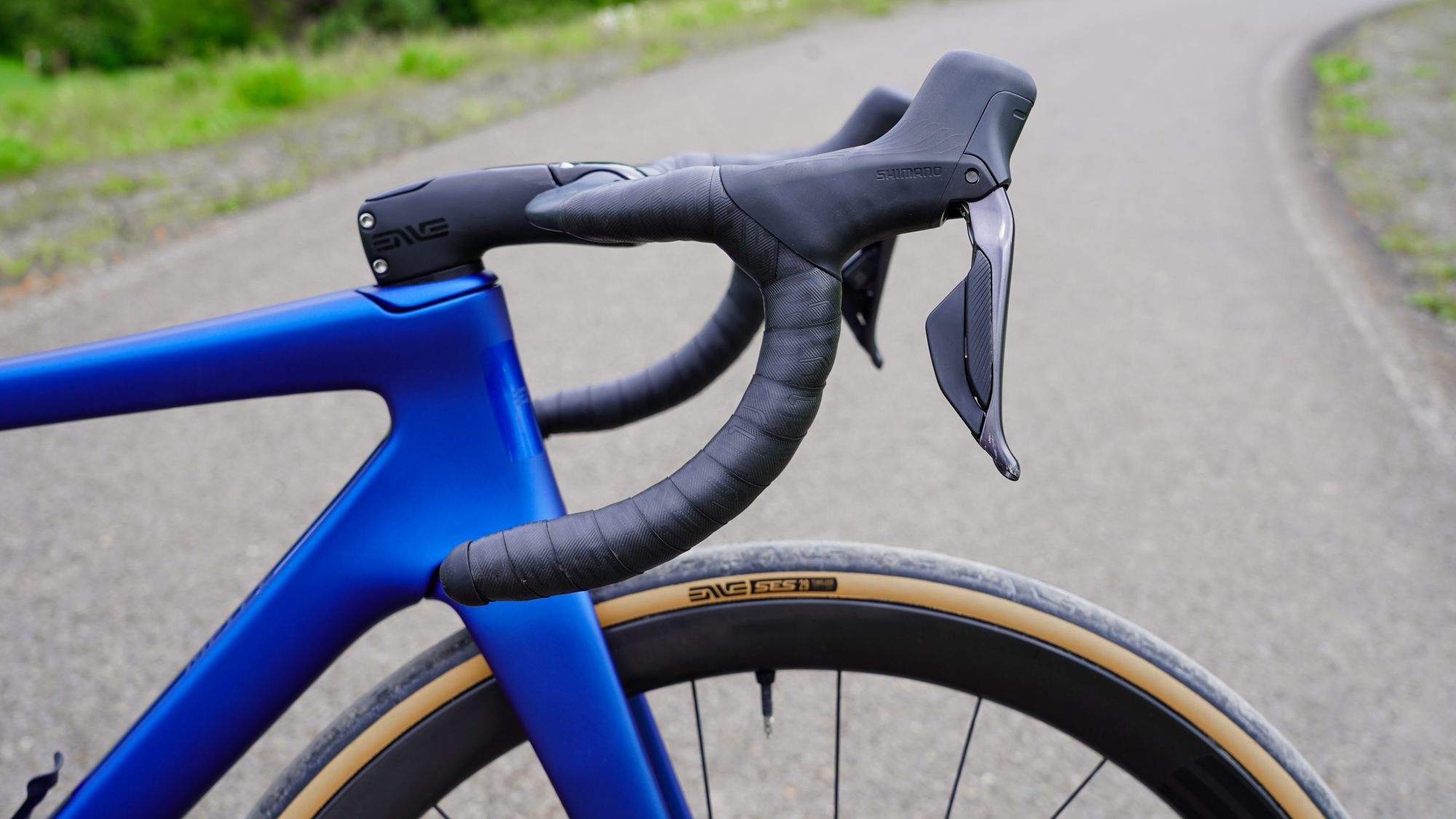
For the purpose of this review, I received a 50cm Melee chassis in the bright Aegean blue color specced with a Shimano Ultegra Di2 groupset, a two-piece In-Route aero cockpit, and the all-rounder SES 3.4 wheels wrapped in 29mm Enve SES road tires. The bike came with a 25mm offset seatpost, which I swapped out for a zero offset seatpost instead. The bike weighed in at a competitive 7.2kg.
I have heard people call the bike's aesthetics' vanilla'. 'All aero bikes look the same,' they'd claim, and the bike's minimal branding and slate grey color didn't seem to help. But in this new Aegean blue colorway, the Melee can't seem to stop turning heads. With the absolute minimum of branding and paired with tan sidewalls, I think it's an absolute stunner, and I suffer from imposter syndrome when riding it. While my background is in elite competition, I haven't raced a road race since 2018, so what the hell am I doing aboard a steed that absolutely screams "I'm fast!"
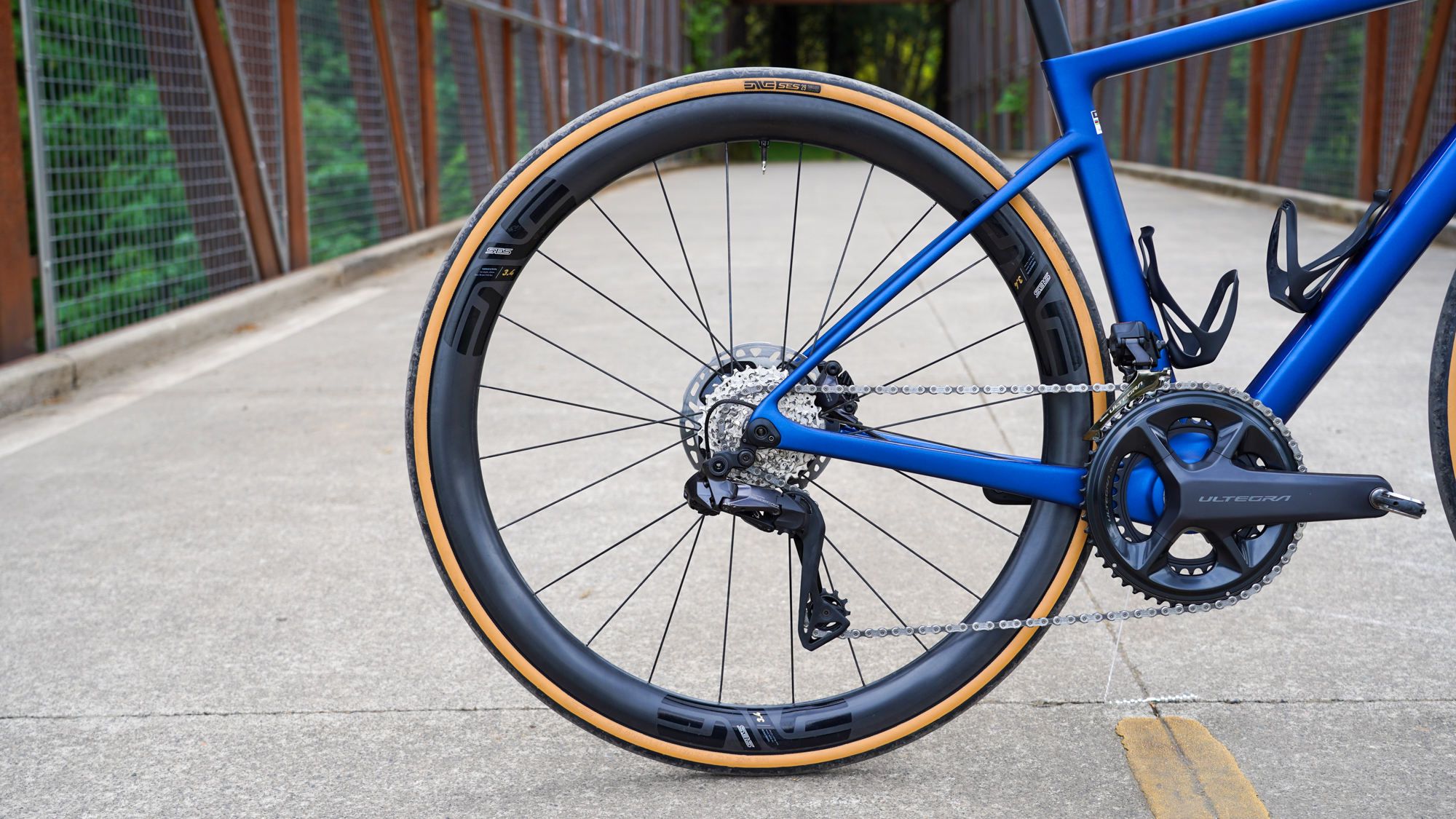
But this is exactly where the Melee differs from most other WorldTour bikes. Yes, the Melee is fast. Yes, the Melee can be raced. But the Melee is so much more than just a racing bike. This is perhaps the one race bike dentists should own. Please allow me to elaborate.
I have the absolute privilege of getting to test some of the finest bikes available, many of which are designed for racing. These race bikes typically represent a brand's flagship product, highlighting its cutting-edge innovation, technology and engineering prowess. However, in the quest for speed, compromises have to be made, often in the way of comfort and handling. Top-end race bikes are made for the highest competition and often demand a certain level of proficiency of the rider. While they're wicked fun for capable riders, they can feel a tad restrictive for those lacking certain handling skills. This is where the Melee distinguishes itself.
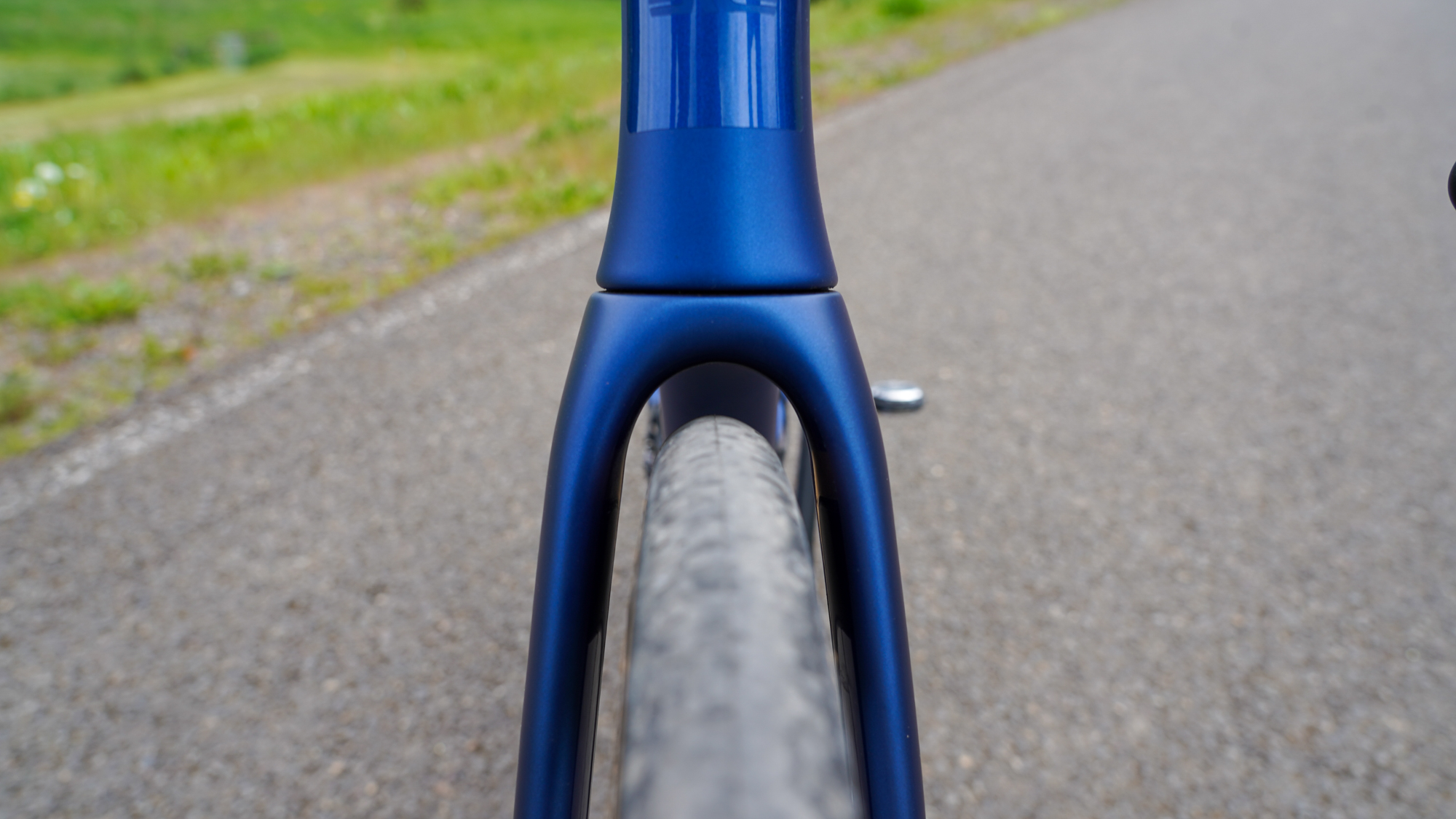
Tire clearance for 35mm on a race bike!
The Melee is among the most accessible race bikes I've had the pleasure of riding. By that, I mean that it's easy to get along with. It offers a lively yet very stable ride. You can throw it hard into a corner, push it from side to side in a sprint, and send it screaming downhill and into a crosswind without ever fearing a loss of control. The wheels stay planted. The rubber never leaves the asphalt. Some bikes out there are responsive to the point of being overly sensitive – you so much as sneeze and you're swerving all over the road. The Melee puts you in the driver's seat.
The flipside here is that it's perhaps not quite as snappy as some other bikes, but you don't get any twitchy-ness either. The Melee is very well-balanced, offering well-rounded performance throughout the ride. The aerodynamic properties shine on the flats, the frame's light weight and stiffness help you climb with ease, and the steady handling lets you bomb down descents. It's also surprisingly comfortable for a race bike, and the wider tires certainly help with that. I'd happily spend all day in the saddle on the Melee, which is not something I'd say about all race bikes.
And for someone who lives and rides in the rainy Pacific Northwest region of the United States, I am thrilled by Enve's decision to add fender mounts to the frame. To me, that underscores the bike's capabilities beyond racing. Enve may have designed the Melee around the demands of racing but it kept the enthusiast rider in mind, wanting the bike ridden - fast, far and often.
Value & Verdict
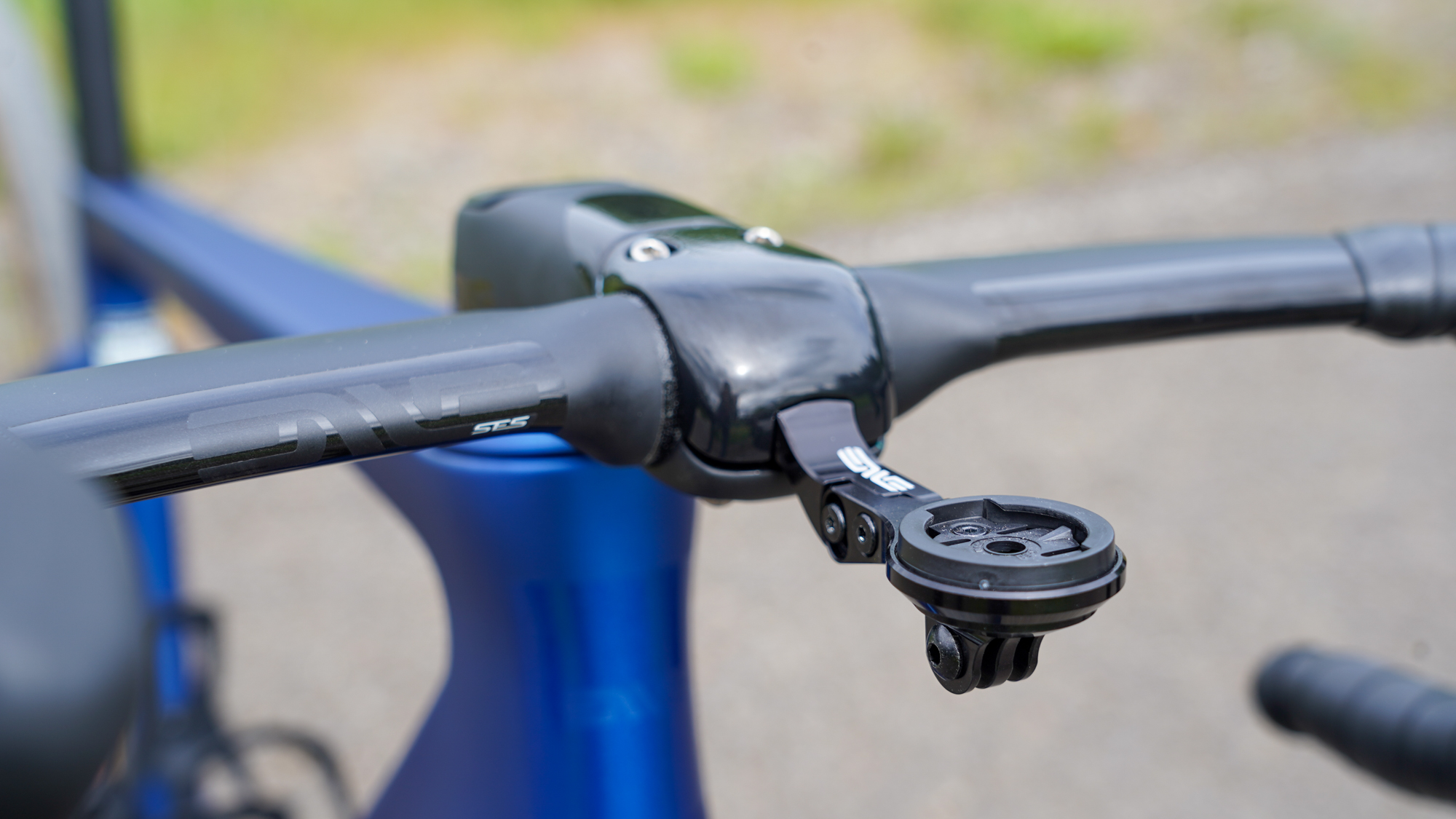
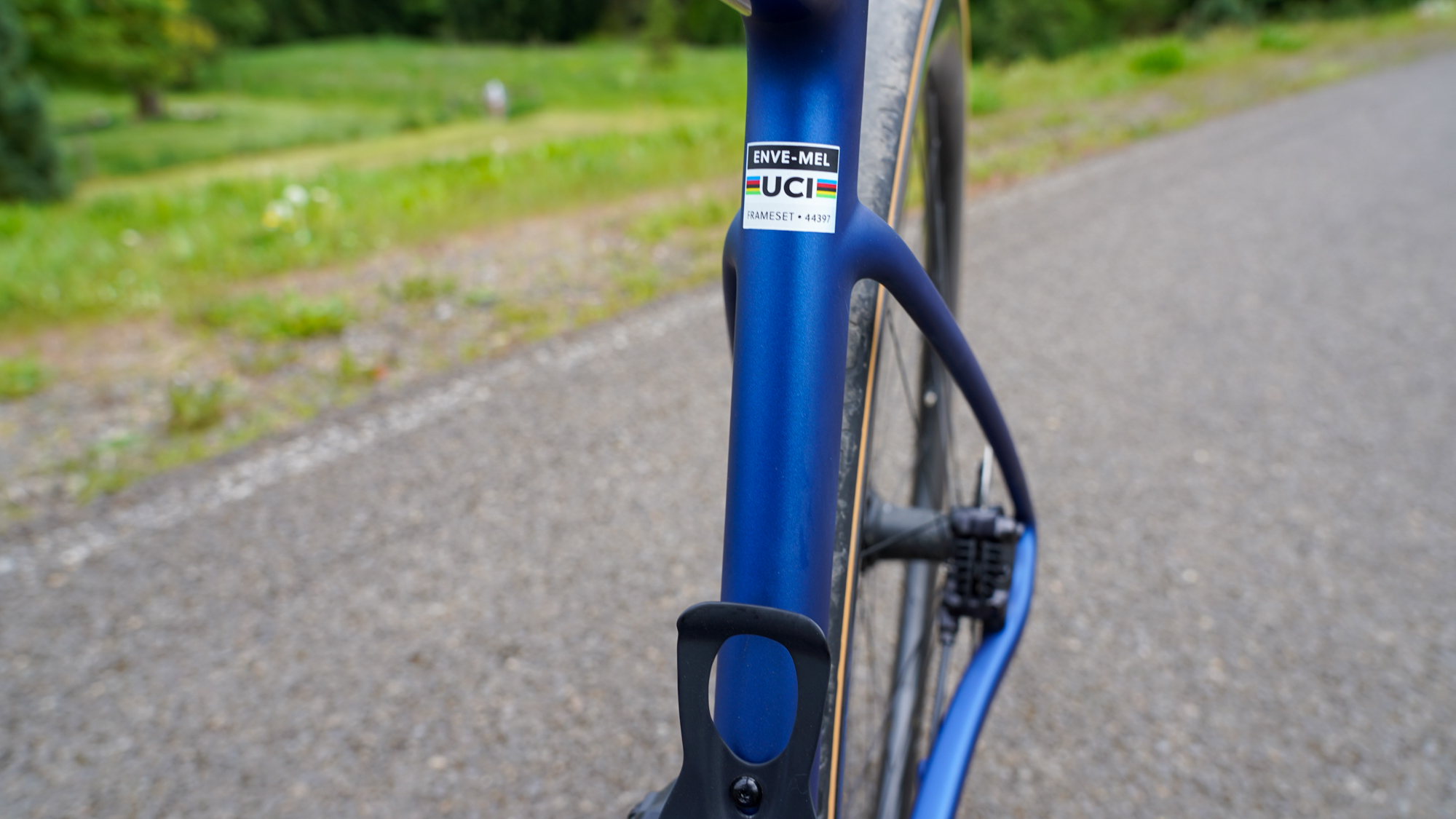
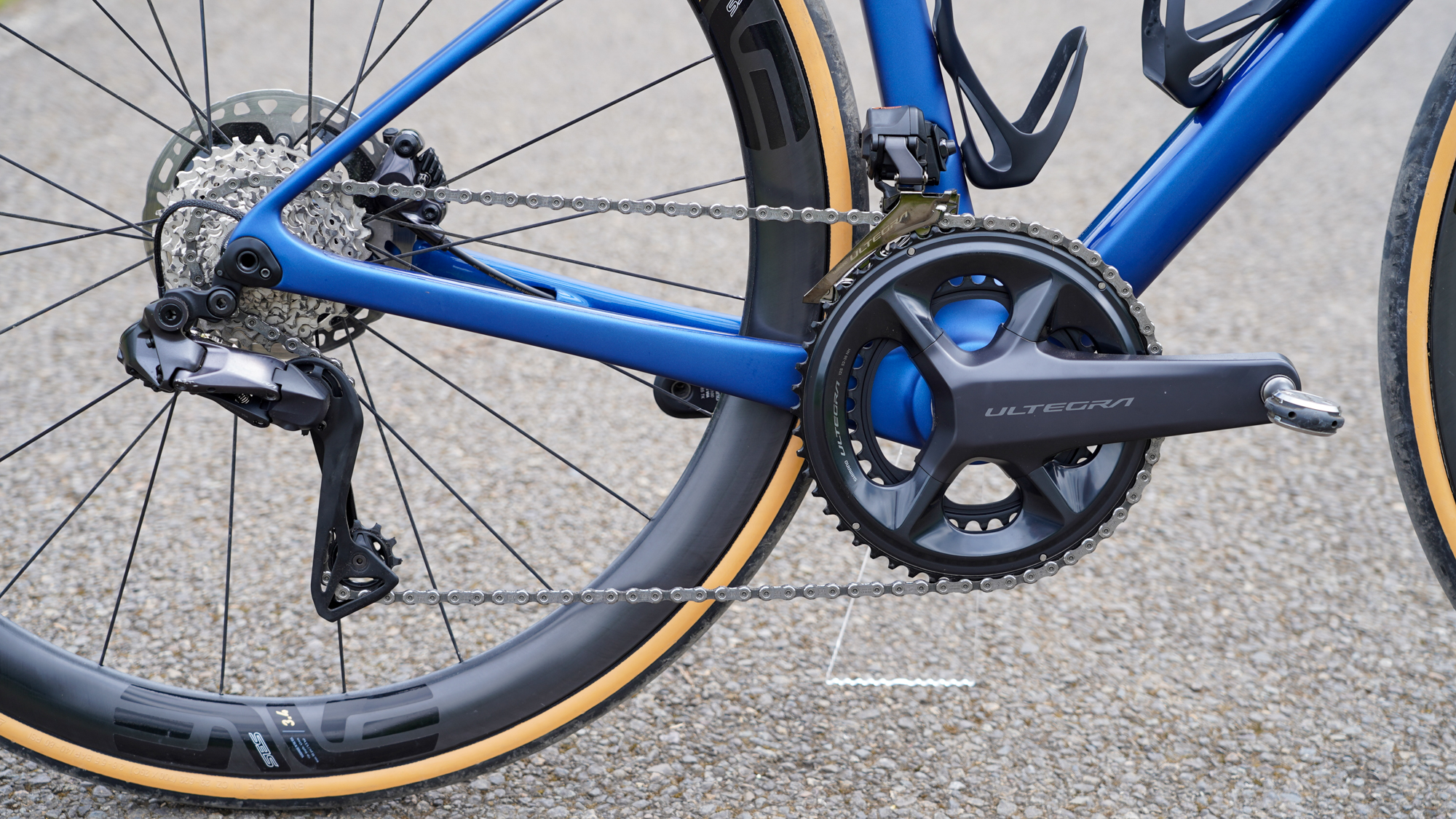

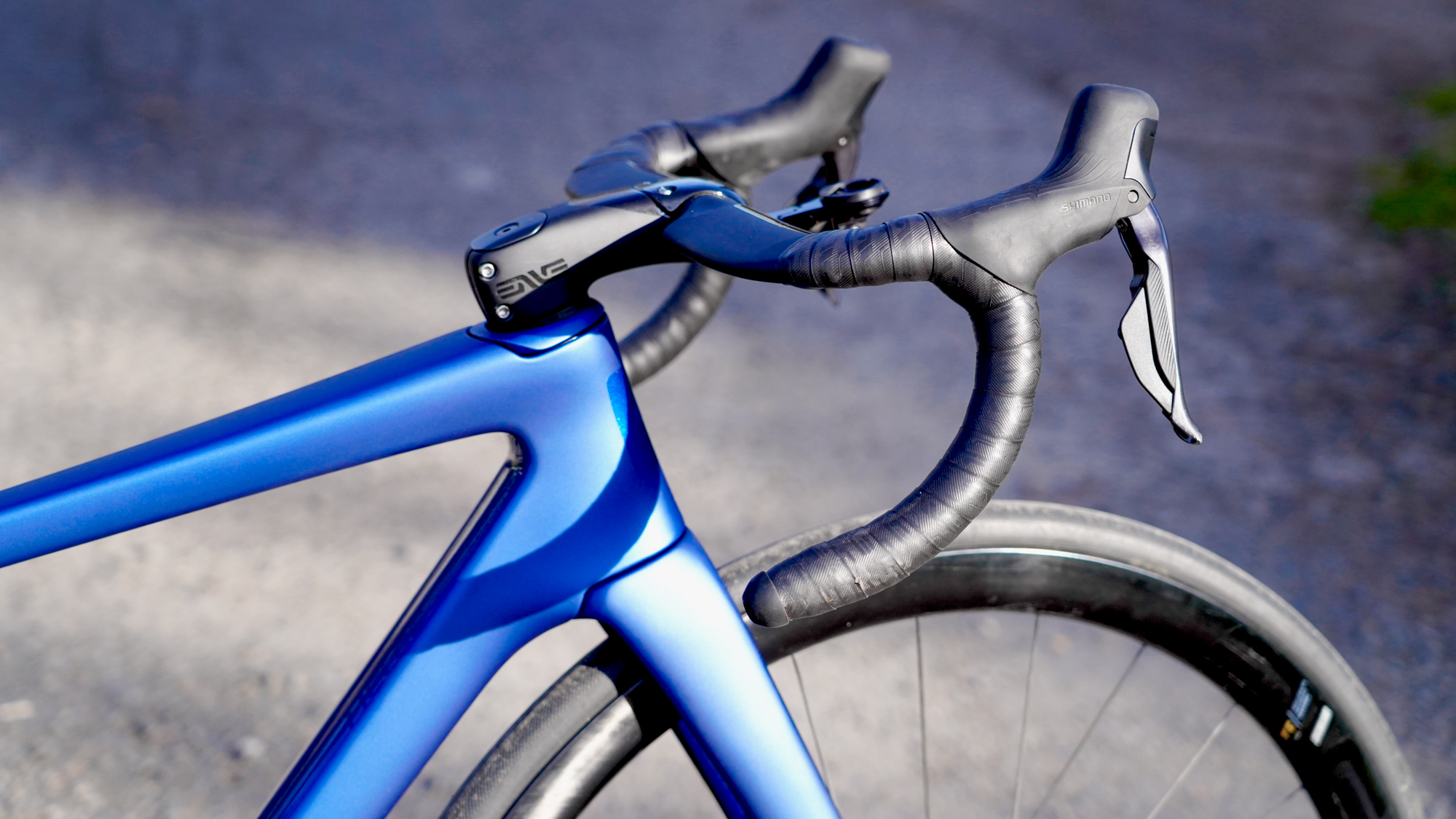
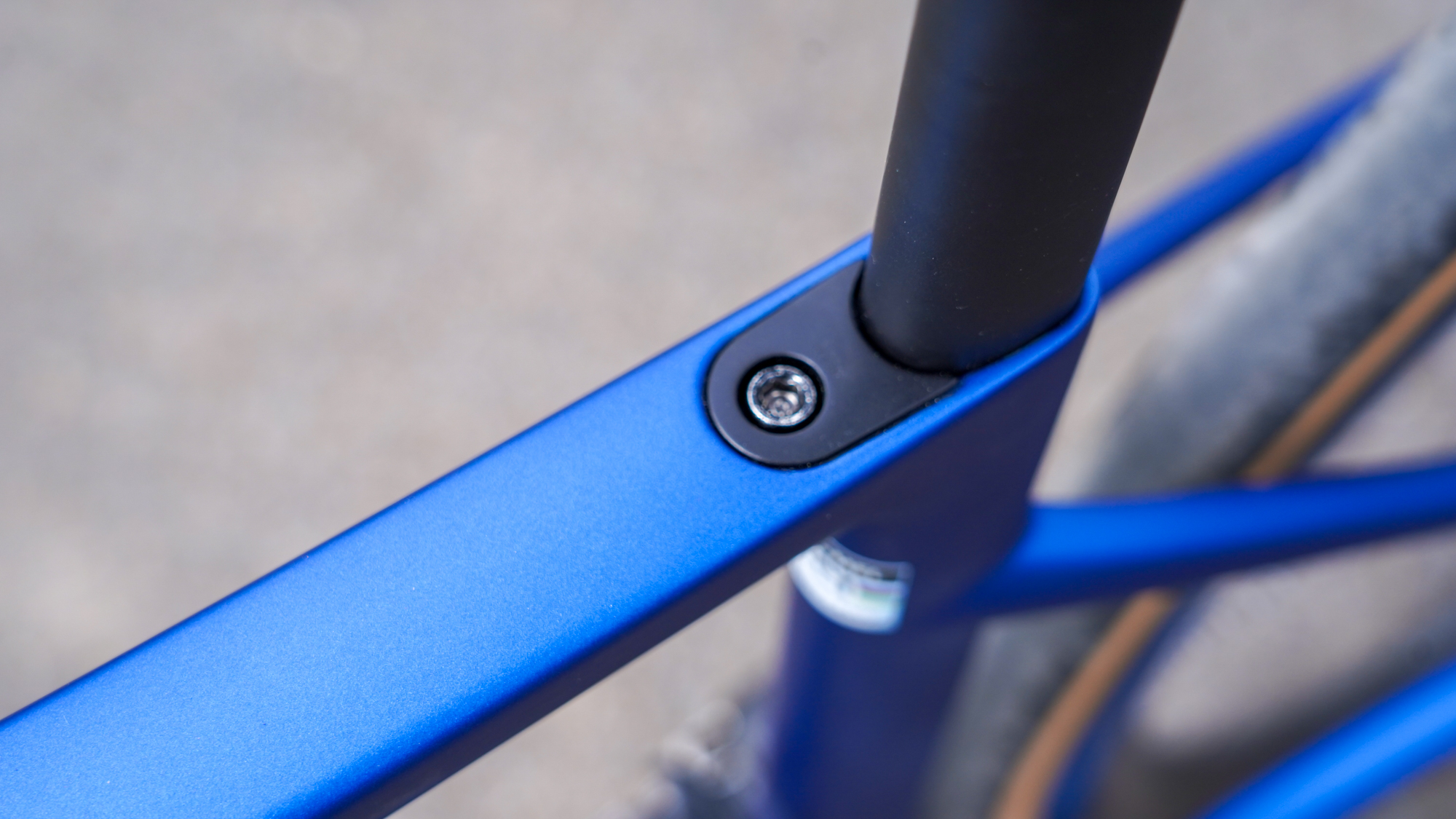

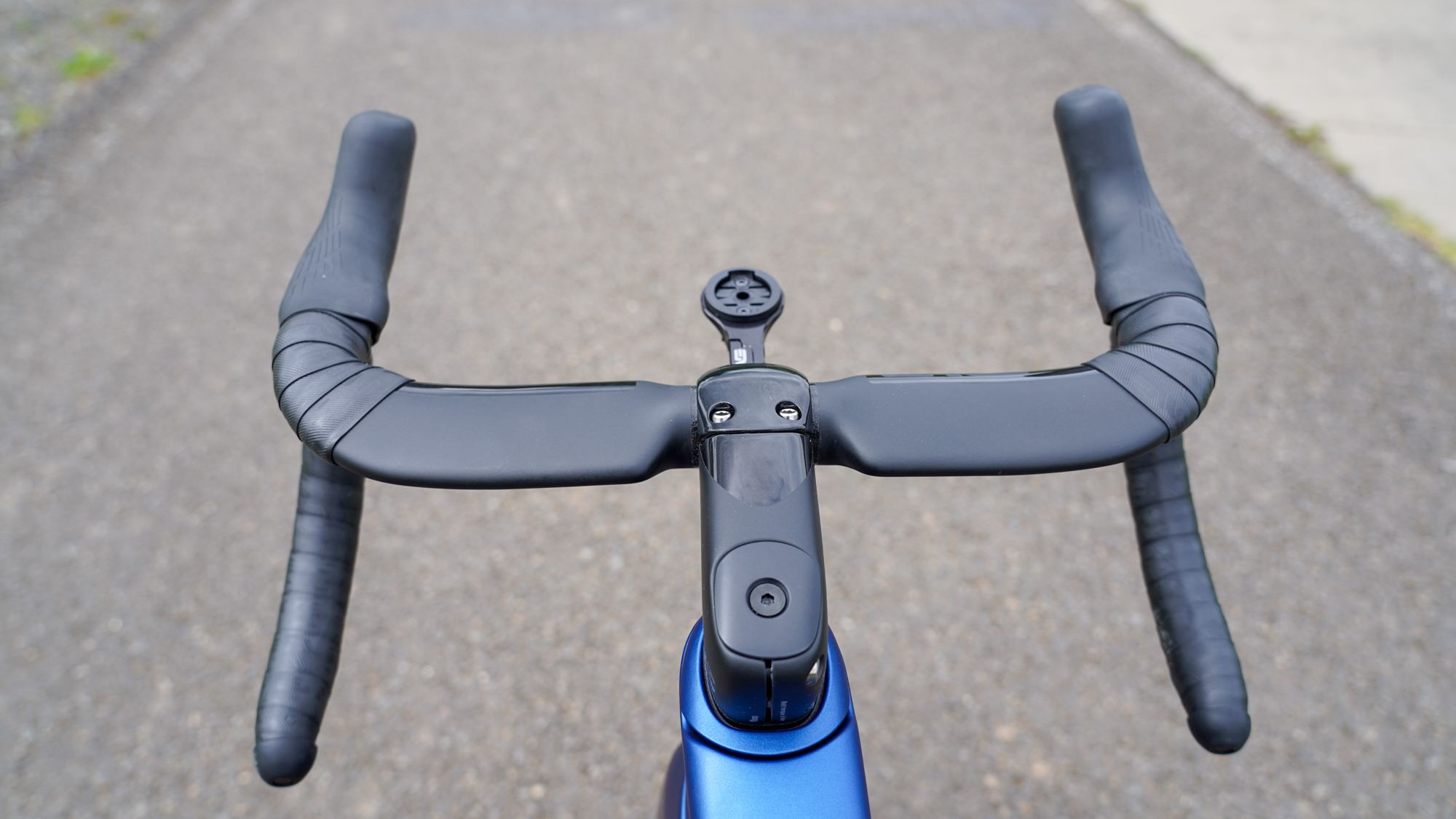
Aerodynamic and light, equipped with mudguard mounts and wide tire clearance, the Melee is a race bike that blurs the lines in the best of ways. From Paris-Roubaix style cobbles to long arduous days of the Tour de France, the Melee is a capable companion for those that demand the most of their equipment. For enthusiasts, the bike’s well-roundedness and thoughtful design considerations adds comfort and conveniences uncommonly found in race bikes.
As the Melee is a top-end bike, you do pay top dollar for the chassis. At $5,500 / £5,300, it's expensive, but in line with top-end race bikes from competitors. Specialized's S-Works Tarmac SL8 also retails for $5,500 but for that you get the frameset and seatpost only; Enve includes a seatpost, stem and handlebar of your choice. Plus, with some smart choices in your build, you may even come in under the cost of most fully build top-end race bikes, which easily go over the $10K mark these days.
SHOP: The Enve Melee
Frameset only: $4,450

Thank you for reading 20 articles this month* Join now for unlimited access
Enjoy your first month for just £1 / $1 / €1
*Read 5 free articles per month without a subscription

Join now for unlimited access
Try first month for just £1 / $1 / €1
Get The Leadout Newsletter
The latest race content, interviews, features, reviews and expert buying guides, direct to your inbox!

Cycling Weekly's North American Editor, Anne-Marije Rook is old school. She holds a degree in journalism and started out as a newspaper reporter — in print! She can even be seen bringing a pen and notepad to the press conference.
Originally from the Netherlands, she grew up a bike commuter and didn't find bike racing until her early twenties when living in Seattle, Washington. Strengthened by the many miles spent darting around Seattle's hilly streets on a steel single speed, Rook's progression in the sport was a quick one. As she competed at the elite level, her journalism career followed, and soon, she became a full-time cycling journalist. She's now been a journalist for two decades, including 12 years in cycling.
- Sonny EvansWriter
-
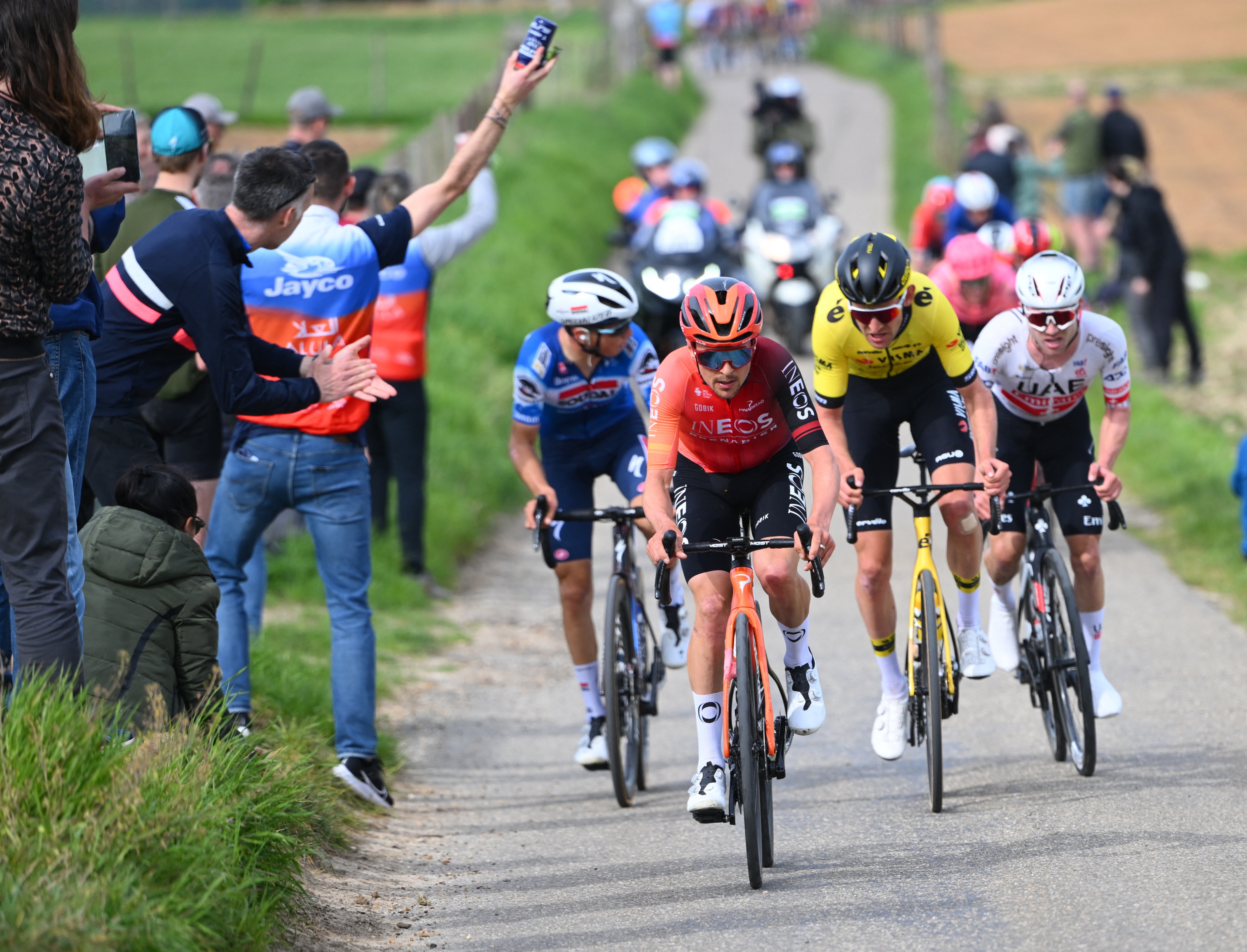 How to watch the Amstel Gold Race 2025: Everything you need to live stream the Dutch Classic
How to watch the Amstel Gold Race 2025: Everything you need to live stream the Dutch ClassicAll the broadcast information for the first of the Ardennes Classics on 20 April with Tom Pidcock – here's how to watch Amstel Gold Race online and on TV.
By Adam Becket Published
-
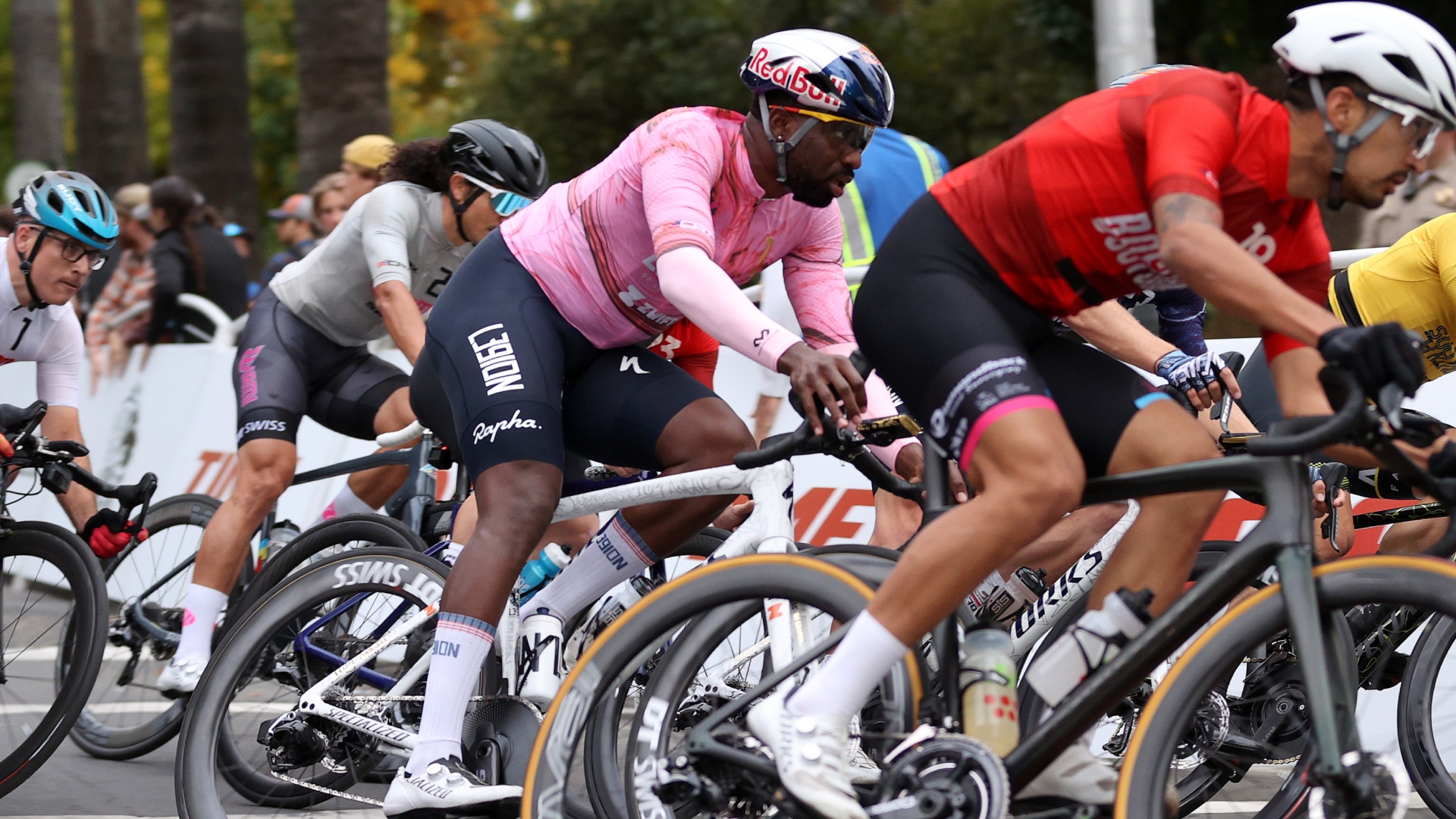 Can you make a living as an American domestic road racer? A look inside the part-time professionalism of the American road peloton
Can you make a living as an American domestic road racer? A look inside the part-time professionalism of the American road pelotonAfter decades of booms and busts, the American road scene finds itself in a fragile place. We spoke to riders to understand the reality of chasing the dream on home soil
By Logan Jones-Wilkins Published
-
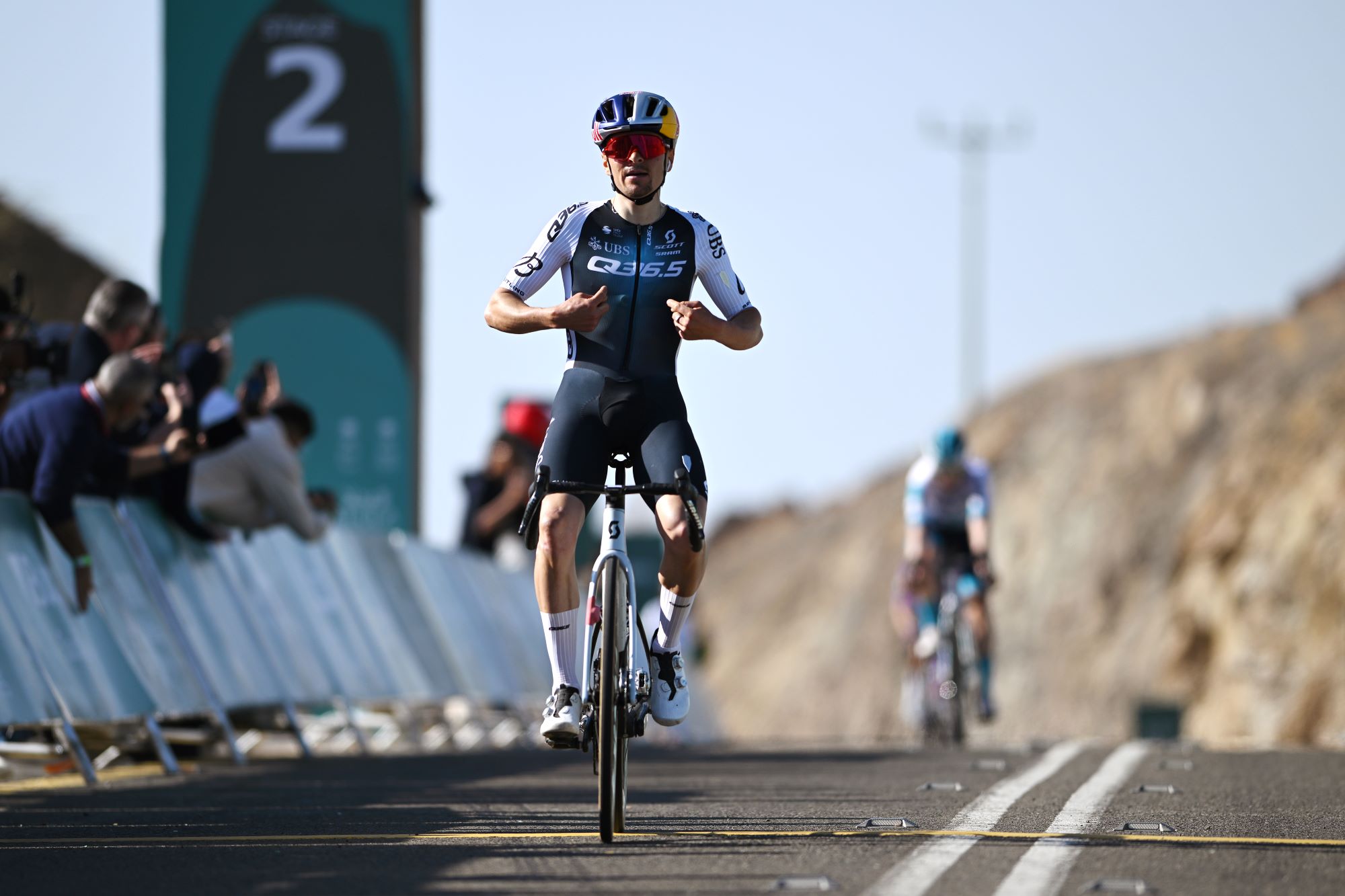 What does Q36.5 mean? We asked the people behind the Italian kit brand that sponsors Tom Pidcock's team
What does Q36.5 mean? We asked the people behind the Italian kit brand that sponsors Tom Pidcock's teamQ36.5's Luigi Bergamo and Lodovico Pignatti Morano take on Cycling Weekly's Q&A
By Tom Thewlis Published
